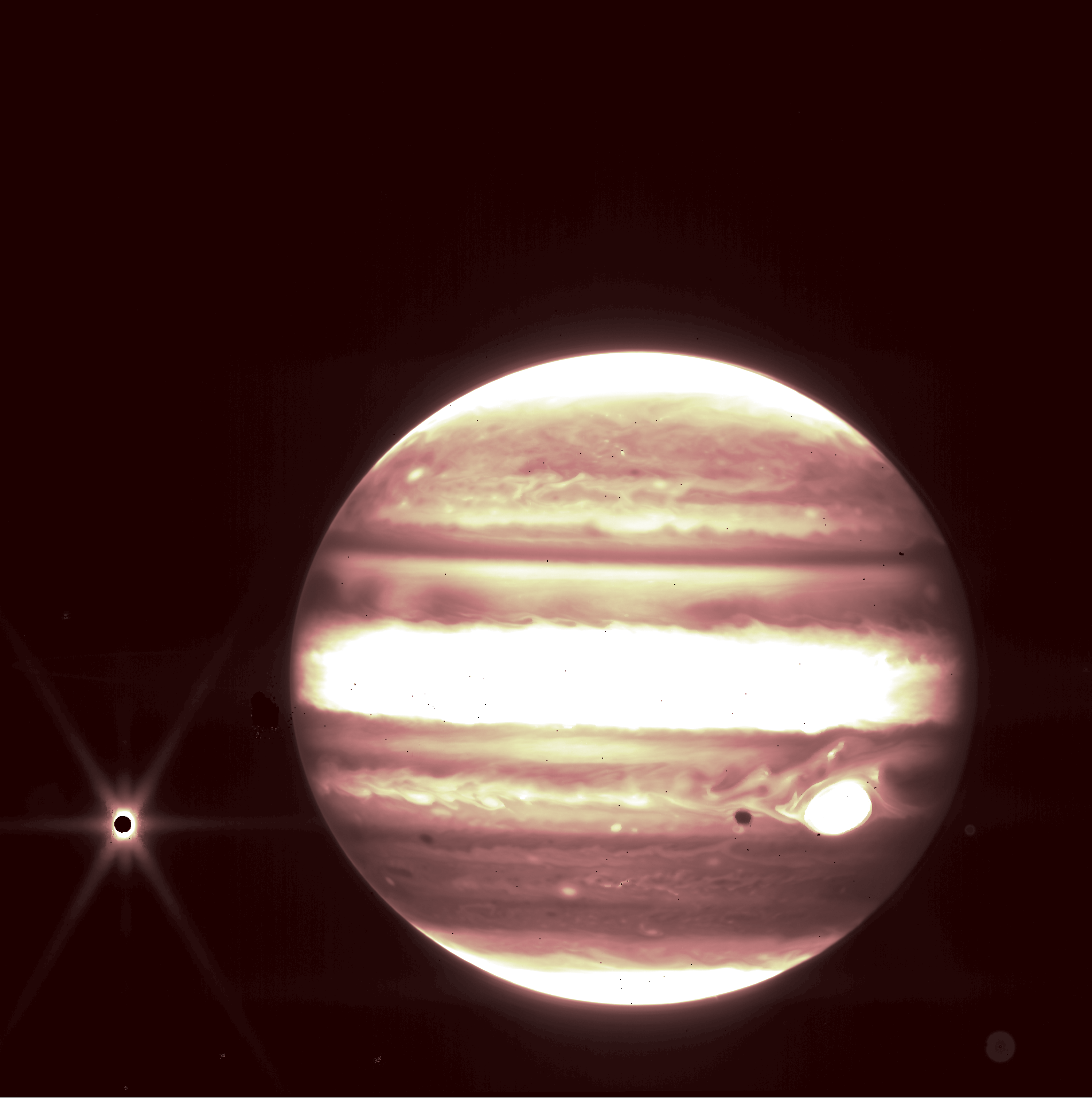Nasa releases first Webb Telescope images of Jupiter and moon Europa
After showing the world the most distant galaxies in the universe on Tuesday, the Webb telescope revealed Jupiter as never before on Thursday.
Nasa has released the first James Webb Space Telescope images from our own Solar System, capturing the gas giant Jupiter glowing in infrared light.
Also visible are Jupiter’s moons Europa, Thebe and Metis.
The images, posted Thursday evening on a Nasa blog, are not as highly processed as the five images of distant galaxies and nebulae the space agency shared with the public on Tuesday.
Instead, the Jovian images come from data collected during Webb’s commissioning phase during the spring, when operators pointed the telescope at different objects to make sure everything was working properly.

Nevertheless, the images give an indication of the wide range of science Webb can pursue, studying not only distant galaxies, but planets in our own cosmic backyard. And despite coming before official science observations of Jupiter, scientists said the image is striking in its clarity and resolution.
“I couldn’t believe that we saw everything so clearly, and how bright they were,” Stefanie Milam, Webb’s deputy project scientist for planetary science at NASA’s Goddard Space Flight Center said in a statement. “It’s really exciting to think of the capability and opportunity that we have for observing these kinds of objects in our solar system.”
Data from Webb’s commissioning phase, as well as the data underlying the stunning first images shared with the public on Tuesday, are now being published in the Space Telescope Science Institute’s Mikulski Archive for Space Telescopes for further study.
But scientists won’t have long to wait before Webb’s first cycle of official science observations gets underway this summer, a program that will include observations of Jupiter, Uranus, asteroids and Mars, as well as the most distant galaxies in the Cosmos.
Join our commenting forum
Join thought-provoking conversations, follow other Independent readers and see their replies
Comments
Bookmark popover
Removed from bookmarks